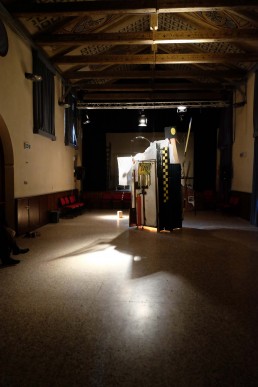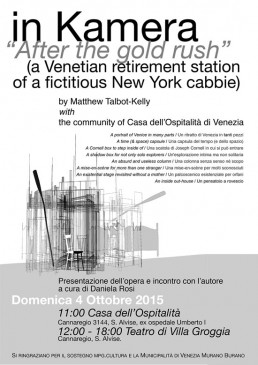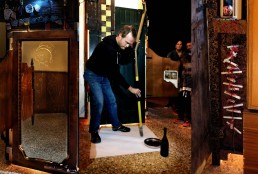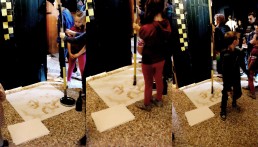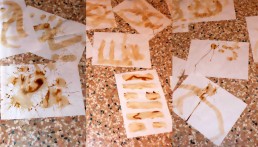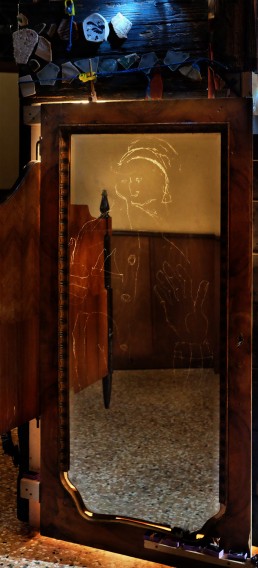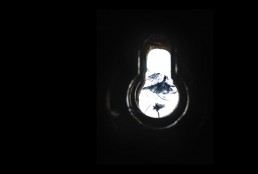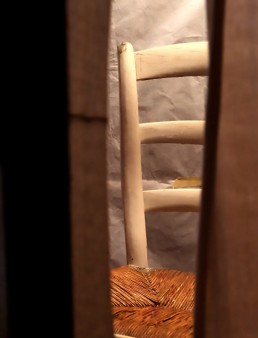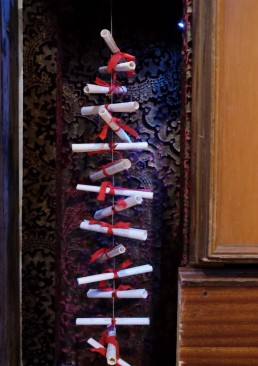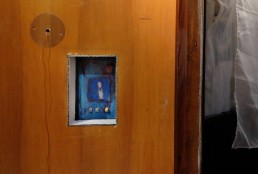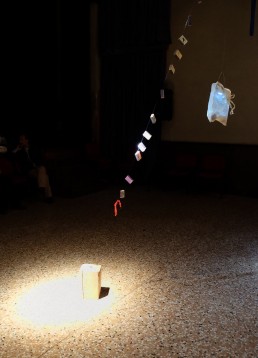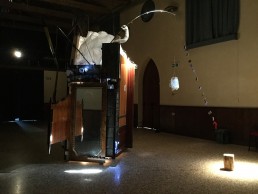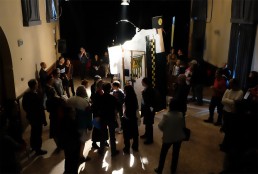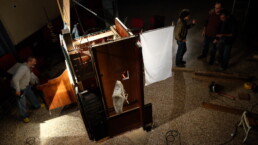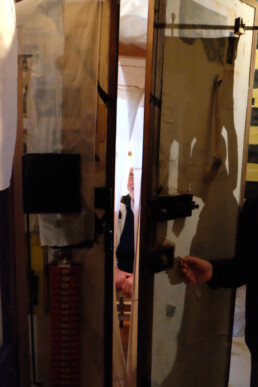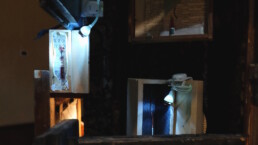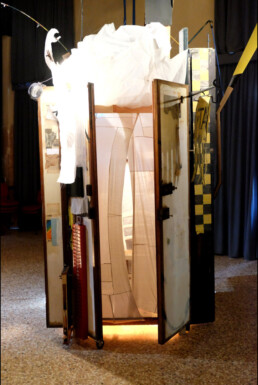“in Kamera/’After the gold rush’ (a Venetian retirement station of a fictitious New York cabbie)”, interactive installation, 2015
interactive audio (arduino), live coffee drawings, mixed media & inhabitable combine, Venice, Italy, 2015.
The project was a single seat interactive magic box assembled from local found materials – by touching various handles, keyholes, hinges, around the outside of the box, the viewers triggered a different audio clip played for the audience member sitting inside. It was installed and uninstalled over eighteen hours – open to the public for six hours. Created with the community of Casa dell’Ospitalità di Venezia
Read More
A portrait of Venice in many parts
A time (& space) capsule
A Cornell box to step inside of
A shadow box for not only solo explorers
An absurd and useless column
A mise-en-scène for more than one stranger
An existential stage revisited without a mother
An inside out-house
In Kamera “After the gold rush” (a Venetian retirement station of a fictitious New York cabbie) is a portrait of Venice in many pieces, a multifaceted mosaic, multimedia and interactive installation made by assembling fragments of the city, objects found and recovered between found and waste, the resulting material of too many races gold. The forms and contents produced by this regeneration offer us a visionary collection, a capsule of time (and space), a box of Joseph Cornell in which we can enter, a display case of memories for an intimate but not solitary exploration. A tower, a bell tower, an absurd column with no sense or purpose other than to abandon oneself to vision and dream. One spectator at a time for a mise en scène for many strangers.
An invitation to rediscover the game and play. Imagination and fantasy find space in an existential stage for orphans: necessary when life becomes a sum of multiple absences. A space to search more than to find yourself. A public and private think-tank. A break in the city of walking, where even an imaginary New York taxi driver can find his own retreat.
The work of Matthew Talbot-Kelly collects and recovers images and objects in time and space. Director, mise-en-scenist, creator of digital special effects for cinema and animated stories for e-books, Talbot-Kelly characterizes its own artistic dimension in the preparation of new and original mise en scène in front of the camera or the spectator, with a wise use of both the most avant-garde artistic strategies and those of classical modernity.
The alternation of recognizable and abstract elements, of meaning and nonsense, of analogue and digital, of material and ephemeral, manages to evoke evident presences starting from numerous absences.
Each work is a fragmentary story, never linear, which always suggests surprising associations.
Discarded and rediscovered objects, old and new images, letters, photographs: Talbot-Kelly recovers and assembles “memories” materials and narratives transforming them into new stories, open and fragmented, through the play of contrasts, contradictions and collisions.
Talbot-Kelly proposes a kaleidoscopic multi-sensorial questioning, generously offering the viewer the freedom to search, find, invent or experiment his own key to access new, other and possible answers.
